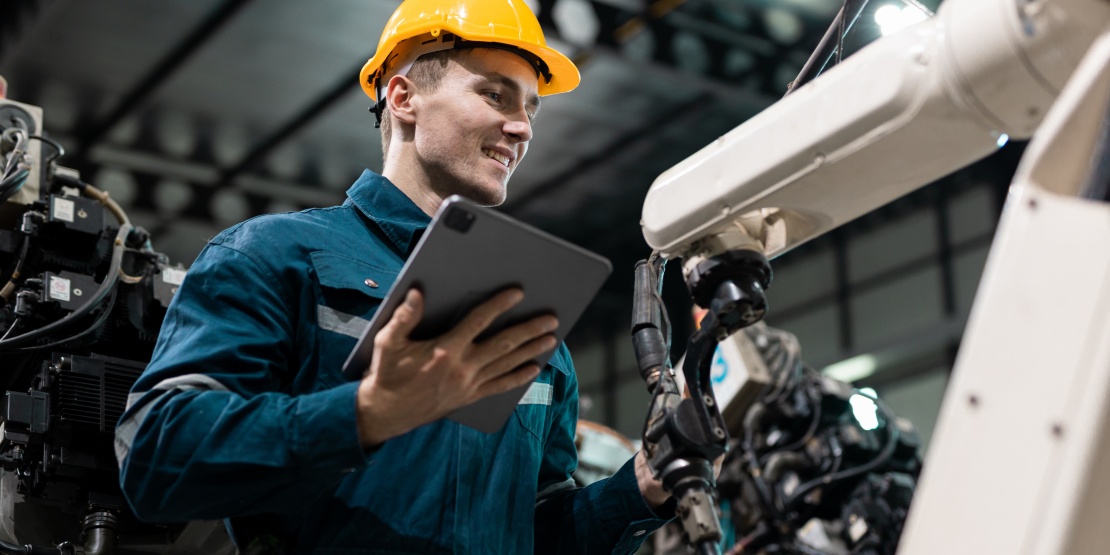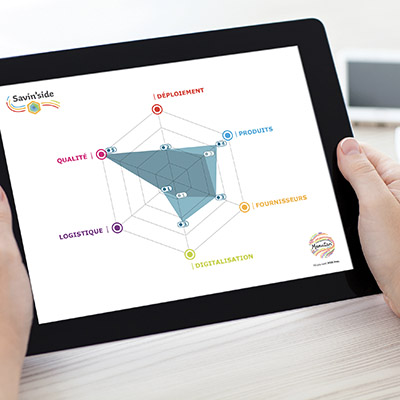Faced with economic, environmental and regulatory pressure, companies are rethinking their procurement practices. Remanufacturing is emerging as a strategic lever that combines economic performance, sustainability and quality requirements. Integrated into a circular economy approach, this process extends the life cycle of products while optimising procurement budgets. Discover how remanufacturing can act as a catalyst for responsible innovation at the heart of your procurement management.
Reducing costs without compromising quality with remanufacturing
Remanufacturing is redefining the rules for procurement departments. It combines budget control and quality requirements within a sustainable performance logic.
Reliable and efficient remanufactured products
Contrary to common misconceptions, remanufacturing is not simply about repairing defective equipment. It's a rigorous industrial process during which a product is completely dismantled, inspected, restored and tested according to strict standards. The objective is to guarantee a level of quality equivalent to that of a new product, while reducing impact on the environment.
This procedure relies on advanced technical skills and precise components management, enabling the detection of worn parts, replacing them and ensuring complete traceability. The result: remanufactured products benefit from a second life, with equivalent or even optimised performance, often at a cost 30-50% lower than new products.
A powerful budget optimisation lever
Remanufacturing constitutes a strategic asset for procurement departments. By integrating these remanufactured products into their tenders or internal catalogues, companies can reduce their acquisition costs while meeting their quality and performance requirements.
Beyond immediate savings, this approach is part of a circular economy logic: it values existing equipment, limits waste and reduces the need for new raw materials. Additionally, it offers a concrete response to growing pressure for sustainable procurement.
Public procurement facing environmental challenges
"Public procurement represents 10% of GDP. This is considerable expenditure, a major economic lever. We might as well direct this spending towards more sustainable products: More robust, more repairable and composed of materials less harmful to the environment."
-- Marline Weber, Sustainable Procurement and Regional Cohesion Policy Officer, Ministry of Ecological Transition
By combining economic efficiency, risk management and environmental commitment, remanufacturing becomes a transformation vector for any forward-looking procurement strategy.
Remanufacturing: fully embracing a circular economy logic
Remanufacturing is emerging as a concrete response to sustainability challenges. It transforms procurement into a commitment lever for a more responsible economy.
Remanufacturing, a pillar of circular resource management
In a context here pressure on natural resources continues to grow, remanufacturing stands as a key solution to extend the life cycle of professional equipment. Unlike a simple refurbishment, this rigorous process involves complete dismantling of products, inspection, replacement of defective components, then reconditioning according to high quality standards.
This model enables significant reduction in raw materials consumption and carbon footprint linked to manufacturing new products. By reintroducing these products into the circuit, companies actively contribute to waste reduction and better resource management. Remanufacturing thus becomes a central driver of the circular economy, reconciling sustainability and efficiency.
Aligning procurement strategy and environmental responsibility
Integrating remanufacturing into a procurement strategy means choosing a more virtuous model. Procurement departments can now combine economic performance and environmental requirements by integrating remanufactured products into their specifications or listing policies.
This approach fully aligns with a CSR (corporate social responsibility) approach: it values the circular economy while strengthening the image of a committed and responsible company. It also helps meet new stakeholder expectations – employees, end customers, partners – who seek transparent organisations capable of reducing their carbon footprint without compromising operational efficiency.
Reinventing our habits for a sustainable future
"The circular economy involves rethinking our current operations and consumption patterns. It's also about reflecting on our manufacturing methods: Can we design goods in an eco-design approach?"
-- Camille Colbus, co-founder of Dero
Thanks to remanufacturing, procurement becomes a lever for responsible innovation, serving both the planet and companies' sustainable performance.
Gaining agility and securing your supplies through remanufacturing
Price volatility, logistical tensions, stockouts... in this uncertain context, remanufacturing offers a strategic alternative to stabilise your procurement and strengthen your responsiveness.
An agile process facing supply chain tensions
While supply chains are subject to recurring disruptions, relying on remanufacturing helps avoid blockages while ensuring the availability of essential products. Thanks to an industrialised and localised process, remanufactured equipment can be quickly put back into circulation, without excessive dependence on international suppliers or rare components.
This solution is particularly relevant in technical or industrial sectors, where production stoppages generate high costs. Remanufacturing ensures smooth supply management, limiting delays and controlling budgets, even during periods of tension.
By reusing existing products and valuing resources already in circulation, it simultaneously contributes to reducing the impact on the environment, in line with circular economy principles.
Better management of your stock and equipment
Beyond procurement, remanufacturing improves overall equipment management throughout its life cycle. It enables implementation of preventive or corrective maintenance strategies, thus avoiding costly immobilisations and waste.
Remanufactured products offer performance equivalent to new ones, but with better return on investment. This lever also helps better anticipate replenishment needs, by mobilising dormant stock or valuing used materials instead of systematically replacing them.
In a world where flexibility has become a competitive advantage, integrating remanufacturing into your supply processes helps strengthen your agility, while placing your procurement practices within a sustainable and responsible logic.









